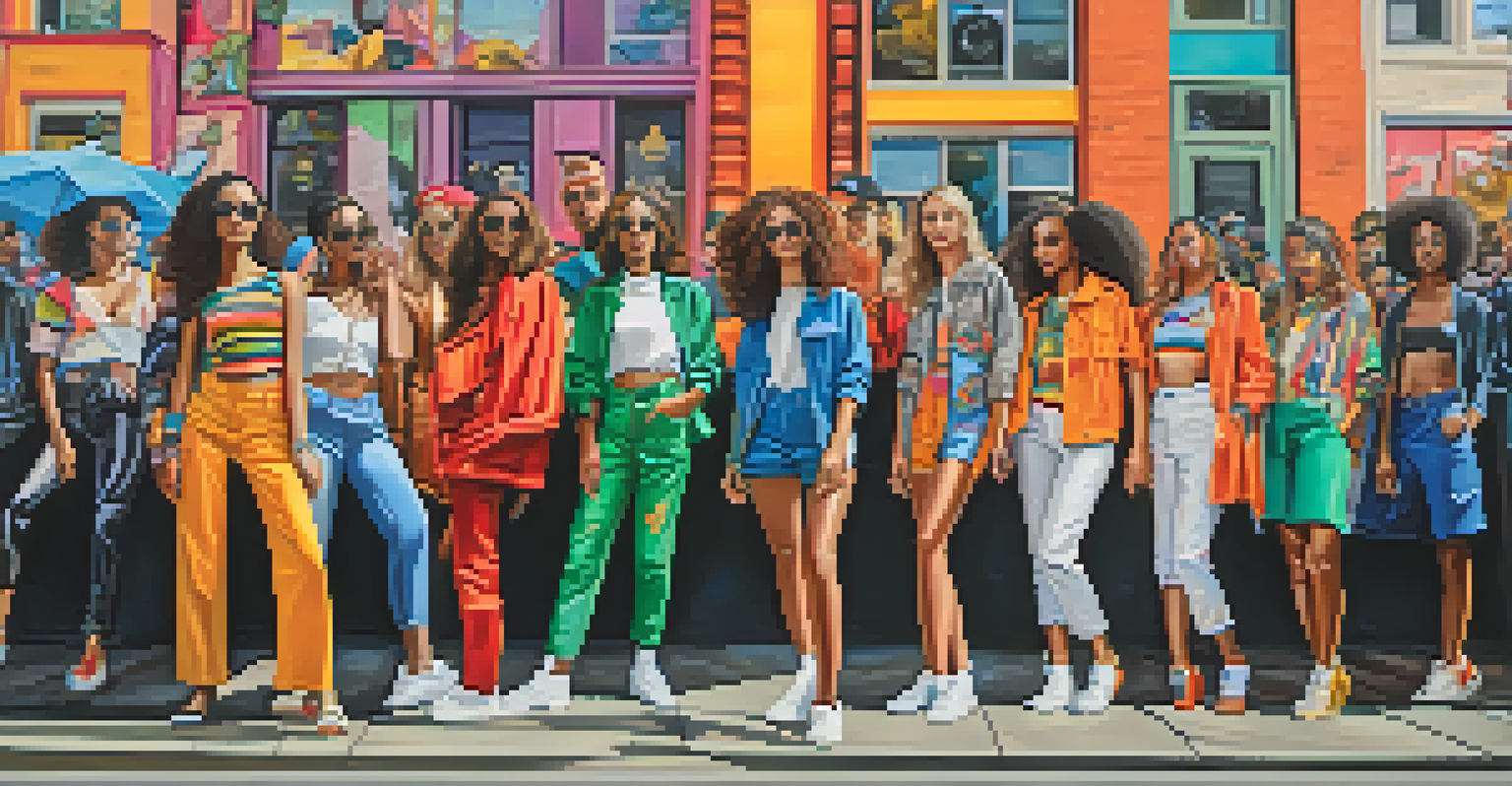Consumer Identity: How Art Shapes Perceptions of Brands

Understanding Consumer Identity in a Visual World
Consumer identity is shaped by various factors, including personal experiences, social influences, and cultural contexts. Art plays a significant role in this identity formation by providing visual cues that resonate with consumers on an emotional level. When consumers encounter brand imagery that aligns with their values, they are more likely to form a connection with that brand.
Art enables us to find ourselves and lose ourselves at the same time.
For example, think of a brand that uses vibrant, abstract art in its advertising. This visual style may attract a younger audience seeking creativity and innovation, thus shaping their identity as trendsetters. In contrast, a brand that employs classical art might appeal to an older demographic that values tradition and sophistication.
Ultimately, art serves as a powerful tool for brands to communicate their essence, ethos, and personality, shaping how consumers perceive and identify with them.
The Emotional Connection Between Art and Brands
Art evokes emotions, which can significantly influence consumer behavior. When a brand uses artistic elements that resonate with its audience, it creates a sense of belonging and loyalty. This emotional connection can lead to higher customer retention and advocacy, as consumers feel understood and valued.

For instance, a cosmetics brand that features artwork celebrating diversity can foster a sense of inclusion among its customers. This not only enhances the brand's image but also encourages consumers to identify with its mission and values. Art, therefore, acts as a bridge between the brand and its audience.
Art Shapes Consumer Identity
Art significantly influences how consumers perceive and connect with brands by reflecting their values and emotions.
By leveraging emotional storytelling through art, brands can deepen their connection with consumers, making them more likely to choose and recommend their products.
Art as a Reflection of Cultural Trends
Art often reflects the cultural zeitgeist, making it a valuable asset for brands looking to stay relevant. By aligning their visual identity with contemporary artistic movements, brands can signal that they understand and embrace current societal values. This alignment can enhance a brand's credibility and appeal.
The best artist has no conception that a marble block does not contain within itself.
Consider how street art has gained prominence in urban culture. Brands that collaborate with street artists can tap into the rebellious and authentic spirit of this movement, appealing to a younger, more progressive audience. This not only boosts brand visibility but also enriches the consumer's perception of the brand as being in tune with modern trends.
Thus, by leveraging art that resonates with cultural trends, brands can position themselves as leaders in their respective markets.
The Role of Storytelling in Artistic Branding
Art is a powerful medium for storytelling, allowing brands to convey their narratives in a visually engaging way. Through compelling visuals, brands can illustrate their missions, values, and journeys, making their identity more relatable. This storytelling aspect helps consumers understand the brand beyond just its products.
For example, a brand that uses illustrations to tell the story of its sustainable sourcing practices not only informs consumers but also builds trust. When consumers see a brand's commitment to its values through artful storytelling, they are more likely to engage with and support that brand.
Emotional Connections Foster Loyalty
Art creates emotional bonds between consumers and brands, leading to increased loyalty and advocacy.
In essence, storytelling through art enables brands to create a richer, more immersive experience for consumers, enhancing their overall perception and connection.
Visual Consistency and Brand Recognition
Visual consistency is key to establishing brand recognition, and art plays a crucial role in achieving this. By utilizing specific artistic styles, color palettes, and imagery, brands can create a cohesive visual identity that consumers easily recognize. This consistency reinforces brand loyalty and familiarity.
Take, for instance, the iconic use of minimalist design in a tech brand's advertising. This visual strategy not only differentiates the brand from its competitors but also cultivates a sense of sophistication and innovation. As consumers repeatedly encounter this visual identity, they begin to associate it with the brand's core values.
Therefore, maintaining visual consistency through art helps brands carve out a distinct space in the minds of consumers, solidifying their identity and recognition.
How Art Influences Brand Loyalty
Art can significantly influence brand loyalty by fostering a deeper emotional connection with consumers. When consumers feel a personal attachment to the artistic elements of a brand, they are more likely to remain loyal supporters. This loyalty often translates into repeat purchases and brand advocacy.
For instance, a fashion brand that regularly collaborates with local artists not only showcases unique designs but also builds a community around its brand. Consumers who appreciate the collaboration may feel more inclined to support the brand, knowing they are contributing to a local art scene.
Cultural Trends Enhance Relevance
Aligning brand imagery with contemporary art movements helps brands stay relevant and credible in the eyes of consumers.
In this way, art becomes a catalyst for building lasting relationships between brands and consumers, enhancing loyalty over time.
The Future of Art in Brand Identity
As consumer preferences continue to evolve, the role of art in shaping brand identity is likely to expand. Brands are increasingly recognizing the importance of authentic narratives and visual experiences that resonate with their audience. This shift towards experiential branding means that art will play an even more pivotal role in connecting consumers with brands.
Emerging technologies, such as augmented reality and virtual reality, are also opening new avenues for artistic expression in branding. For example, brands can create immersive art experiences that allow consumers to engage with their products in innovative ways, enhancing their overall perception.

Looking ahead, brands that prioritize art as a core component of their identity will be well-positioned to create meaningful connections with consumers, ultimately shaping their perceptions and fostering loyalty.